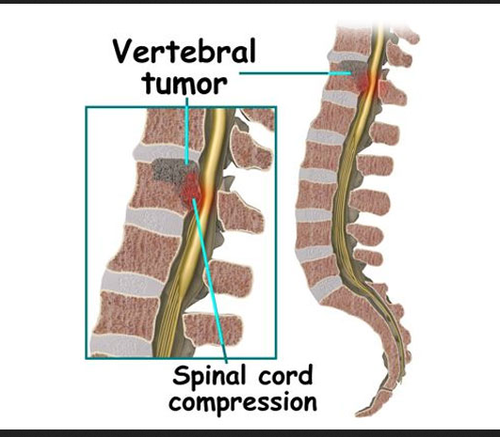Spinal Cord Tumors
A spinal tumor is a mass of tissue that forms around the spinal cord or spinal column. The cells expand and multiply uncontrollably here, seemingly unaffected by the technique that keeps regular cells in check. Cancerous and non-cancerous spinal tumors exist. Primary tumors arise in the spine, while secondary tumors arise when cancer spreads from another section or organ to the spine.
A spinal tumor is related in two ways.
1. By the location of the injury on the spine. The cervical, thoracic, lumbar, and sacral regions are the most commonly affected.
2. The location of the spinal cord
The following are the most common forms of tumours:
Intramedullary Tumors are tumors that develop inside the spinal cord. They usually come from a form of glial cell located in the spinal cord’s interstitium.
2. Extramedullary Tumors: This type of tumor is located beyond the dura, which is a protective layer that surrounds the spinal cord. These tumours grow in the membranes that surround the spinal cord or in the nerve roots that branch out from it. These tumours have an effect on the spinal cord by compressing it and causing other problems.
.
Symptoms of Spinal Cord Tumors:
Back pain, particularly in the middle or lower back, is the most common symptom of spinal tumors, both benign and malignant. The pain gets worse with activity and can get worse at night while you’re sleeping.
Other signals to look for include:
1) Tumor development causes pain at the tumor site.
2) Back pain that spreads to other areas of the body
3) Sensitivity to pain, heat, and cold is reduced.
4) Dysfunction of the bowels or bladder
5) Difficulty walking, which can result in falls.
Causes of Spinal Cord Tumors:
There is no clear picture of how spinal tumours form. Defective genetic elements, according to the Spine Surgeon, play a part. However, it is still unknown if these faulty genes are inherited or evolve over time.
Spinal cord tumours have been linked to inherited symptoms such as neurofibromatosis 2 and von Hippel-Lindau disease in some cases.

